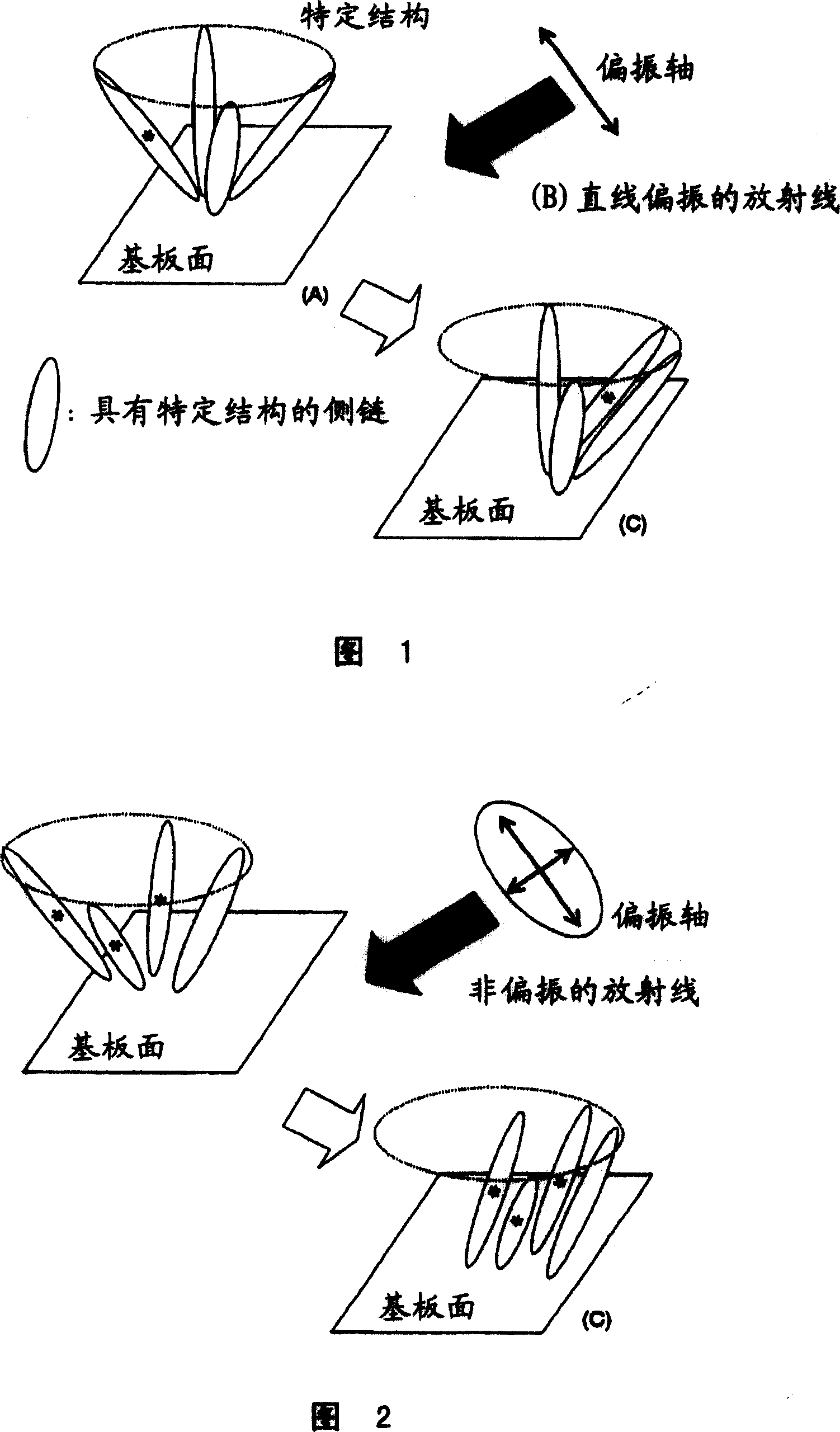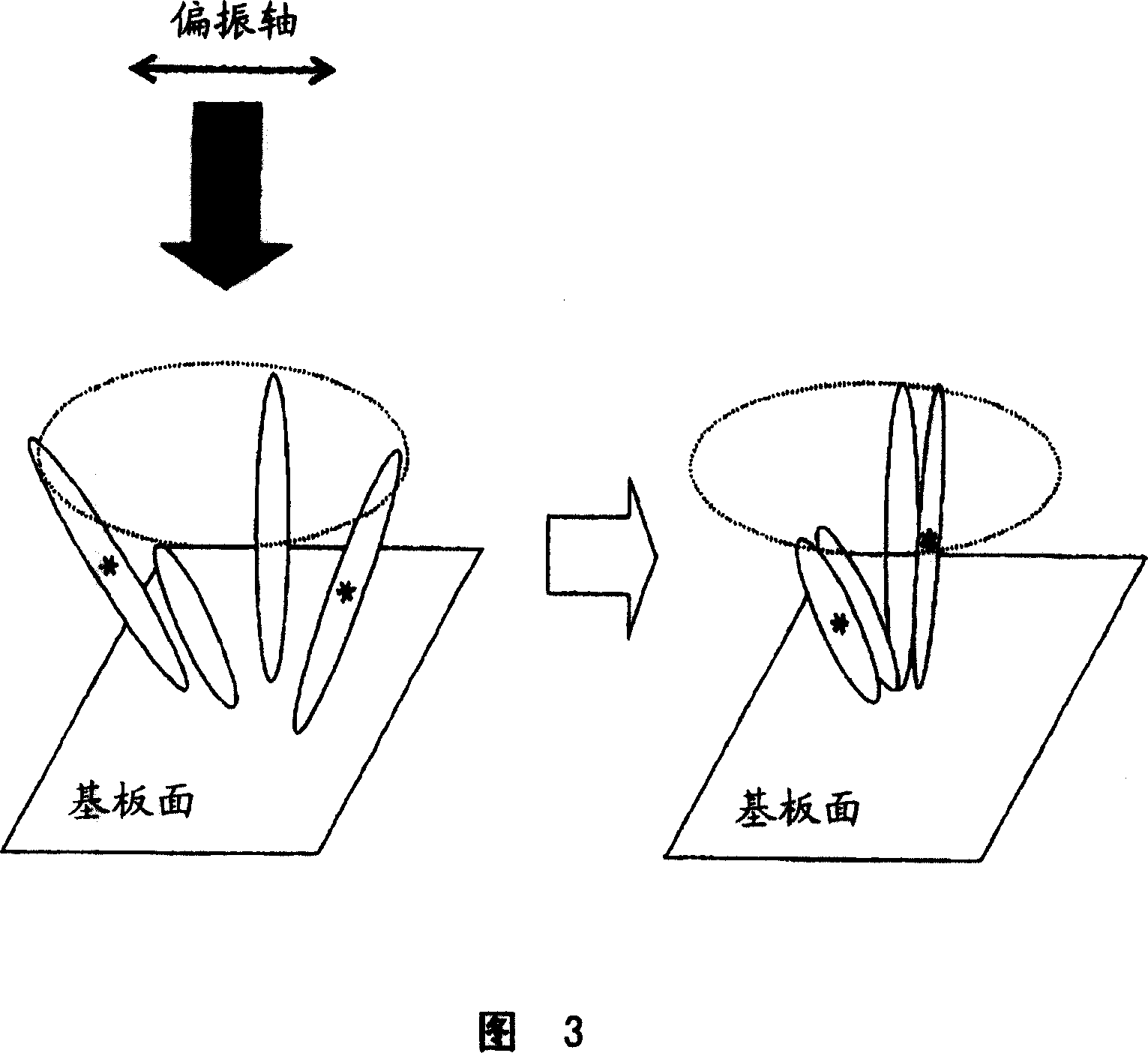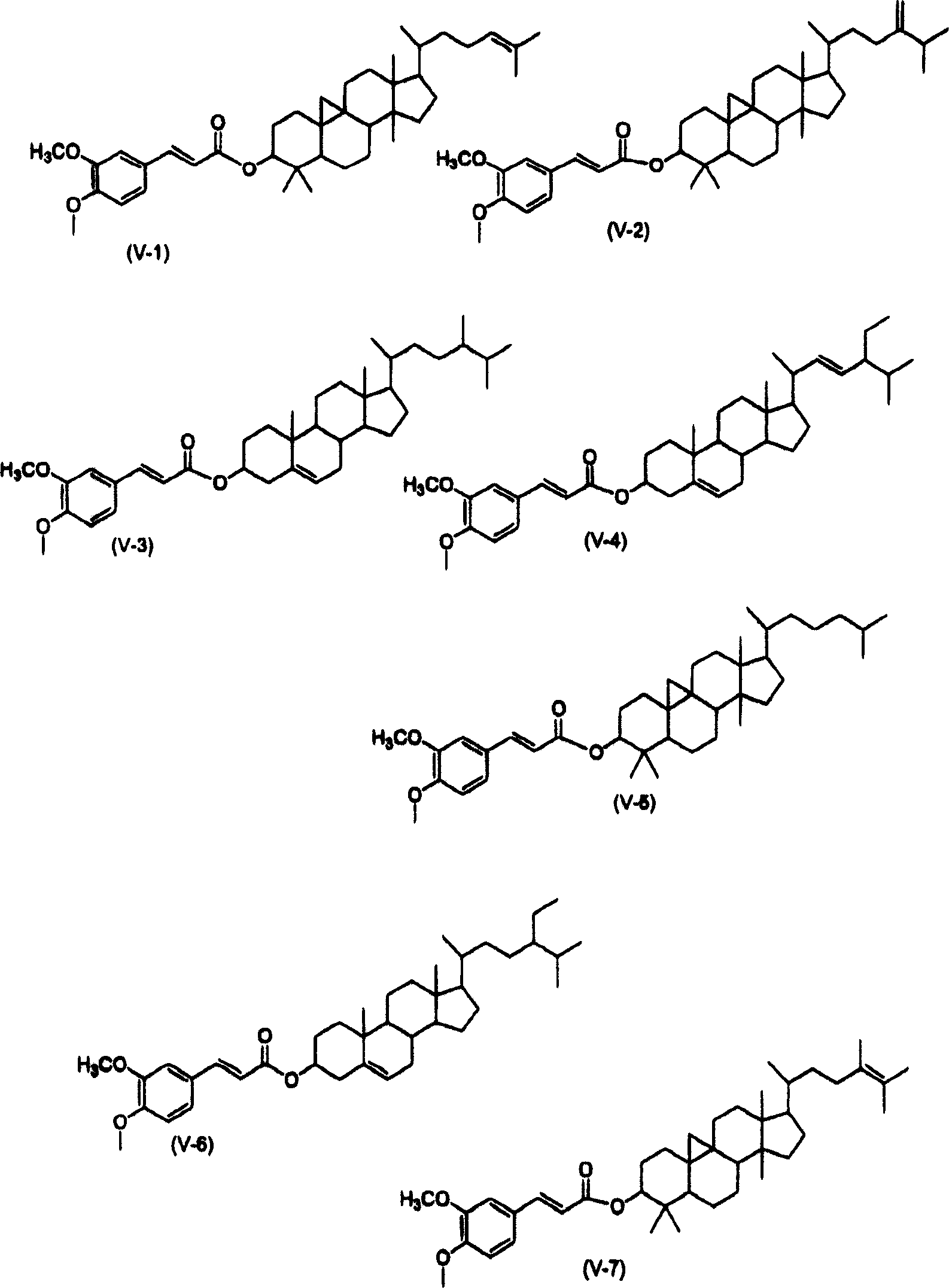Liquid crystal aligning agent, alignment film and liquid crystal display device
A technology of liquid crystal alignment agent and liquid crystal alignment film, which is applied in liquid crystal materials, instruments, optics, etc., and can solve problems such as high radiation exposure
- Summary
- Abstract
- Description
- Claims
- Application Information
AI Technical Summary
Problems solved by technology
Method used
Image
Examples
Embodiment
[0108] The present invention is further specifically described below through examples, but the present invention is not limited by these examples. The pretilt angles, voltage holding ratios, and retardation in Examples and Comparative Examples were evaluated by the following methods.
[0109] [Pretilt angle]
[0110] Measured by the crystal rotation method using a He-Ne laser according to the method described in T.J.Scheffer et.al.J.Appl.Phys.vol.19, p.2013 (1980).
[0111] [Orientation of liquid crystal]
[0112] The presence or absence of abnormal regions when the voltage was turned on and off (applied and released) to the liquid crystal display element was observed with a polarizing microscope, and it was judged as "good" when there were no abnormal regions.
[0113] [Voltage retention rate]
[0114] A voltage of 5 v was applied to the liquid crystal display element at intervals of 167 microseconds for 60 microseconds, and after the applied voltage was released, the volt...
Synthetic example 1
[0116] Polymerization of polyamic acid
[0117] 0.1 mole (22.4g) of 2,3,5-tricarboxycyclopentyl acetic acid dianhydride and 2-(orizanilyloxy group) ethyl ( 78.1 g of 3,5-diaminobenzoate) was dissolved in 400 g of N-methyl-2-pyrrolidone, and reacted at 60° C. for 6 hours. Next, the reaction mixture was poured into a large excess of methanol to precipitate the reaction product. Then, it wash|cleaned with methanol, and dried at 40 degreeC under reduced pressure for 15 hours, and obtained 99 g of polyamic acids (henceforth "polymer 1a").
[0118] imidization reaction
[0119] 380 g of N-methyl-2-pyrrolidone, 3.2 g of pyridine, and 4.08 g of acetic anhydride were added to 20.1 g of polymer 1a, and an imidization reaction was performed at 120° C. for 4 hours. Next, the reaction mixture was poured into a large excess of methanol to precipitate the reaction product. Then, it washed with methanol and dried under reduced pressure for 15 hours to obtain 19 g of polyimide (hereina...
Synthetic example 2
[0121] Polymerization of polyamic acid
[0122] 83.7 g of 6-(Olizanilyloxy)hexyl (3,5-monoaminobenzoate) synthesized in the same manner was used instead of 2-(Olizanilyloxy)ethyl (3,5-diaminobenzoate) Except 0.1 mol (78.1g), operation similar to the synthesis example 1 was performed, and 104 g of polyamic acids (henceforth "polymer 2a") were obtained.
[0123] imidization reaction
[0124] Use 21.2g polymer 2a instead of polymer 1a 20.1g, carry out operation identical with synthesis example 1 except that, obtain polyimide (hereinafter referred to as " polymer 2b ") 20g.
PUM
| Property | Measurement | Unit |
|---|---|---|
| thickness | aaaaa | aaaaa |
| diameter | aaaaa | aaaaa |
| angle | aaaaa | aaaaa |
Abstract
Description
Claims
Application Information
 Login to View More
Login to View More - R&D
- Intellectual Property
- Life Sciences
- Materials
- Tech Scout
- Unparalleled Data Quality
- Higher Quality Content
- 60% Fewer Hallucinations
Browse by: Latest US Patents, China's latest patents, Technical Efficacy Thesaurus, Application Domain, Technology Topic, Popular Technical Reports.
© 2025 PatSnap. All rights reserved.Legal|Privacy policy|Modern Slavery Act Transparency Statement|Sitemap|About US| Contact US: help@patsnap.com



